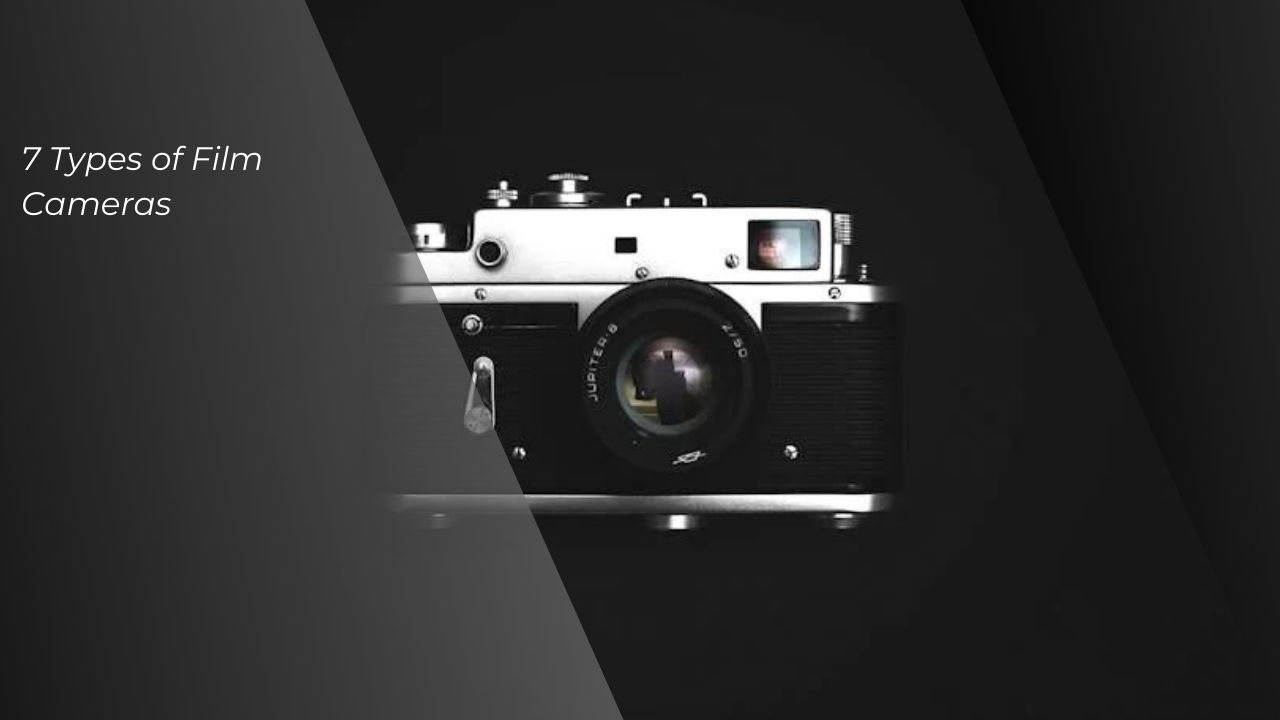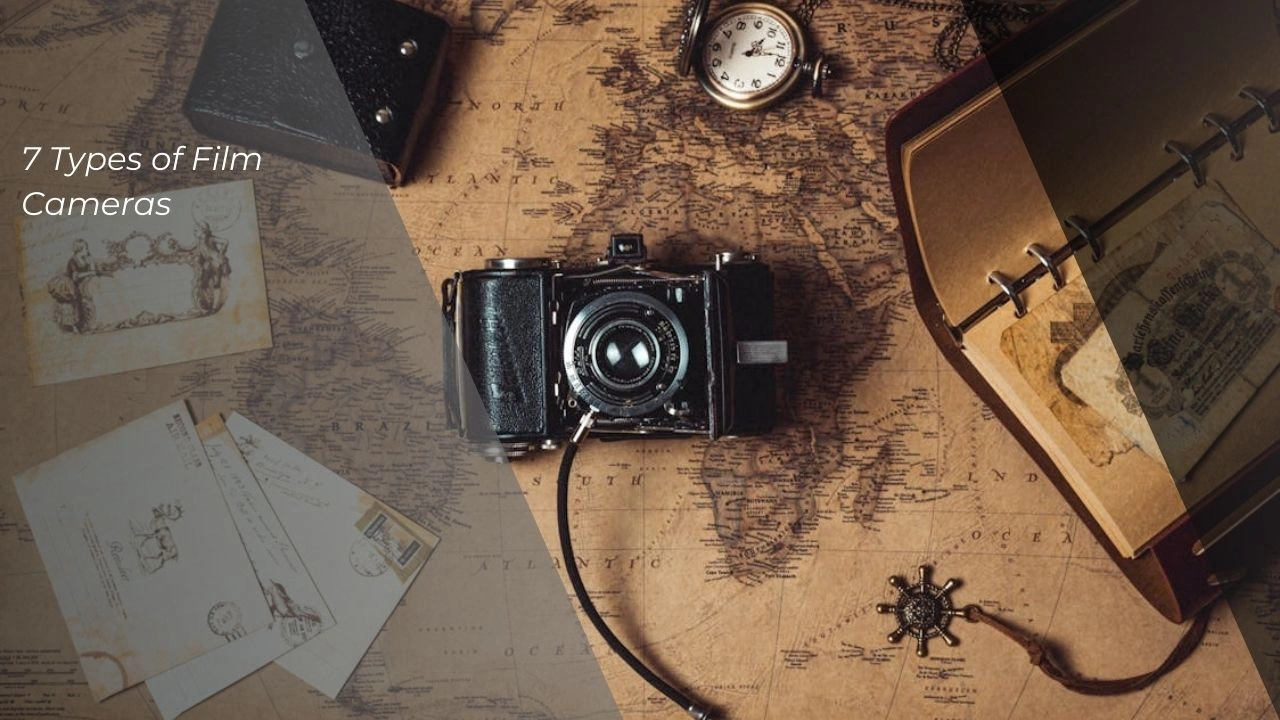Different types of film cameras that you should know before deciding to use these unique old-school cameras.
Although we are already in the digital age, especially when it comes to photography with a lot of digital cameras with its wide array of features and models, the existence and popularity of film cameras doesn’t seem to be slowing down.
The resurgence of this type of camera is attributed to a younger generation that has taken an interest in vintage stuff including the film cameras
Also Read
A lot of people have sworn by it, especially for its unique and vintage-looking design and also for the photographic result that this camera has to offer.
With a lot of analog cameras around, we’ll try to cover the the main types of film cameras used by film photographers and explore the main strengths of each one.
Read also: How Film Camera Work
Table of Contents
Types of Film Cameras

1. Single-Lens Reflex Cameras
The 35mm SLR camera is the best place to start. It’ll be these types of cameras you might find in your parent’s or grandparent’s attic or basement.
SLR stands for Single-Lens Reflex, it offers a fantastic starting point if you want to dive into the world of analog photography.
The feature that defines this type of camera is that it has an internal mirror that allows you to look at what the final image is going to look like.
The SLR camera also has a wide array of lenses that are readily available so you can change them according to your needs and preference.
With the SLR camera, you have full control over your final image as you can adjust the shutter speed, aperture and ISO as per your creativity.
Also, this camera is widely available and one of the most popular ones amongst the analog photography enthusiasts.
You will also have a wide range of films, from color to black and white, to choose from.
The SLR film camera is not limited to the 35mm only, depending on its model, some are able to use medium format film, thus allowing you to print a larger photos.
Read also: 5 Reasons to Switch to DSLR Camera
2. Rangefinders Camera
The next one is the Rangefinders cameras, it has a separate window to focus and view the object you want to photograph so you don’t have to look directly through the picture-taking lens.
But, since the lens that is used to capture the image and the one that you’re looking at is different, it can cause a difference between the one that you see on the lens and the actual image that is being captured by the camera.
Some advantage of this camera is you’ll be more unlikely to gain as much attention as lifting a large SLR and lens to your eye.
Also, since its not have the mirror mechanism like an SLR, this type of film camera is also easier to carry around.
Many rangefinder cameras have fixed lenses, but there are many available that have interchangeable lenses.
3. Twin-Lens Reflex (TLR) Cameras
The two lenses on the front of the camera are what give these cameras their name. The TLR or the twin-lens reflex camera operates in almost the same manner as a 35mm rangefinder in that it contains two lenses, one for viewing and framing the image, and another for actually taking the photo.
It has been a great choice for street photographers as you don’t have to lift your camera to your eye to take a picture because the viewing window is placed on top, you just need to look down and take the picture.
And on top of that, many of the TLR cameras have a quiet shutter button and also a popup magnifier to increase the precision of focusing to your object.
4. Point-and-Shoot Cameras
Point-and-shoot cameras, or known sometimes for its other name the “compact cameras”, are another type of 35mm film camera that is available in the market.
And as its name suggests, this camera is probably the simplest camera to operate and an excellent choice for someone who has not used to photography.
The point-and-shoot camera sometimes gives you a little control over the exposure and shutter speed of the image, but most of the time, it doesn’t.

5. Large Format Camera
For the photography world, the large format camera might be the granddaddy of many if not almost all modern cameras, whether digital or even film analog cameras.
A camera is considered a large format camera if it able to takes an image that is 9x12cm or lager, and also, there are several sizes available for large formats cameras, ranging from 4×5 to 8×10 and 11×14.
The photographer also needs a large, black cloth draped over his head so he can compose and focus the image. The advantage for this camera is that it can produce big, stunning and nearly gainless photos.
But, it has its own drawbacks, with a longer process and several adjustments to make sure that the focus and aperture are in the right amounts.
6. Instant Camera
When the first Polaroid camera, the Model 95, went on sale in 1948 at a Boston department store, instant photography took its first step. The biggest benefit of this camera is that you may see the image in front of your eyes in just a few minutes.
Similar to a point-and-shoot camera, this kind of camera has very limited control options with some that allow you to change the brightness of the image, but who cares about that if you can instantaneously see the picture that you take in just a few minutes?
The film used in this camera is also called the Polaroid film, but if you’re looking for a newer brand, you can try the Fuji Instax series.
7. Disposable Camera
Disposable cameras, also called single-use cameras, are still available today with major film brands continuing to make them, and they even come with a built-in flash that reaches up to 3 meters.
Even though the disposable camera lacks if not without any control for image settings aside from turning the flash on and off or whatsoever, it’s still a great choice for beginners or children who want to learn photography.
So there you go the 7 types of film cameras for you to choose to start your journey of analog photography!


















